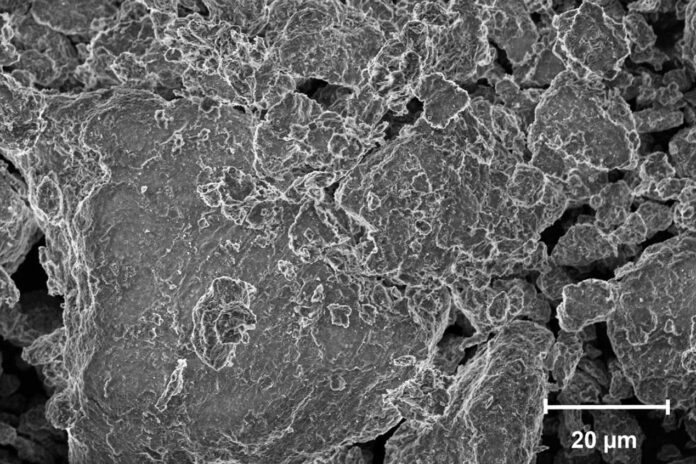Soil holds a staggering 2,500 billion tons of sequestered carbon, making it one of Earth’s largest carbon sinks, second only to the ocean. Despite its ubiquity, scientists are just starting to grasp how soil effectively locks in carbon, preventing it from re-entering the carbon cycle.
Carbon in soil can be sequestered for varying durations, ranging from days to years, effectively preventing its immediate release into the atmosphere. Alternatively, carbon may fuel microbial activity in the soil, leading to the respiration of carbon dioxide (CO2) into the environment and contributing to the ongoing warming of the Earth.
In a recent study, researchers from Northwestern University investigated the factors influencing the fate of plant-based organic matter in soil. Through laboratory experiments and molecular modeling, they studied the interactions between organic carbon biomolecules and clay minerals, known for trapping organic matter.
The study revealed that electrostatic charges, structural characteristics of carbon molecules, metal nutrients in the soil, and competition among molecules significantly influence soil’s capacity to trap carbon.
Northwestern’s Ludmilla Aristilde, the study’s senior author, said, “The amount of organic carbon stored in soil is about ten times the amount of carbon in the atmosphere. If this enormous reservoir is perturbed, it would have substantial ripple effects. There are many efforts to keep carbon trapped to prevent it from entering the atmosphere. To do that, we must first understand the mechanisms at play.”
Scientists looked to smectite clay, a mineral that sequesters carbon in natural soils. Then, they examined how the clay mineral’s surface bonded to ten different biomolecules — including amino acids, sugars related to cellulose, and phenolic acids related to lignin — with varying chemistry and structures.
Aristilde said, “We decided to study this clay mineral because it’s everywhere. Nearly all soils have clay minerals. Also, clays are prevalent in semi-arid and temperate climates — regions we know will be affected by climate change.”
Aristilde and her team initially studied how clay minerals interact with individual biomolecules. They observed that because clay minerals carry a negative charge, biomolecules containing positively charged components such as lysine, histidine, and threonine exhibited the most robust binding. However, they discovered that electrostatic charges didn’t solely influence this binding. Through 3D computational modeling, the researchers determined that the structure of the biomolecules also played a significant role.
Aristilde said, “There are instances where two molecules are positively charged, yet one interacts better with the clay than the other. It’s because the structural features of the binding are also important. A molecule has to be flexible enough to adopt a structural arrangement that can position itself in a way that aligns its positively charged components with the clay. The lysine, for example, has a long arm with a positive charge that it can use to anchor itself.”
Contrary to expectations, Aristilde and her team found that negatively charged biomolecules could still bind to clay minerals with the help of surrounding natural metal nutrients. Positively charged metals like magnesium and calcium acted as bridges between the negatively charged biomolecules and clay minerals, facilitating the formation of bonds.
Even biomolecules that wouldn’t typically bind to clay showed increased binding in the presence of magnesium. This demonstrates how natural metal constituents in soil can enhance carbon trapping. While this phenomenon has been observed before, the study provides insights into the underlying structures and mechanisms.
In their study of interactions between individual biomolecules and clay minerals, the researchers observed predictable and straightforward binding patterns. Aristilde and her team conducted experiments mixing various biomolecules together to obtain insights more closely aligned with real-world environments.
Recognizing that different types of biomolecules coexist in the environment, they also investigated the interactions in biomolecule mixtures.
Initially, the researchers expected biomolecules to compete for interaction with the clay minerals. However, they uncovered unexpected behaviors. Surprisingly, even positively charged biomolecules with flexible structures were prevented from binding to the clay minerals. While they readily bonded with the clay individually, the tendency of biomolecules to bond with each other seemed to outweigh their attraction to the clay.
Aristilde said, “This has not been shown before. The energy of attraction between two biomolecules was higher than the energy of attraction of a biomolecule to the clay. That led to a decrease in adsorption. It changes the way we think about how molecules compete on the surface. They aren’t just competing for binding sites on the surface. They can actually attract each other.”
Researchers are now looking forward to exploring the interaction between biomolecules and minerals in soils found in warmer regions, including tropical climates. In another project, they aim to look at how organic matter is transported in rivers and other water systems.
The research will be published on Friday (Feb. 9) in the Proceedings of the National Academy of Sciences.
